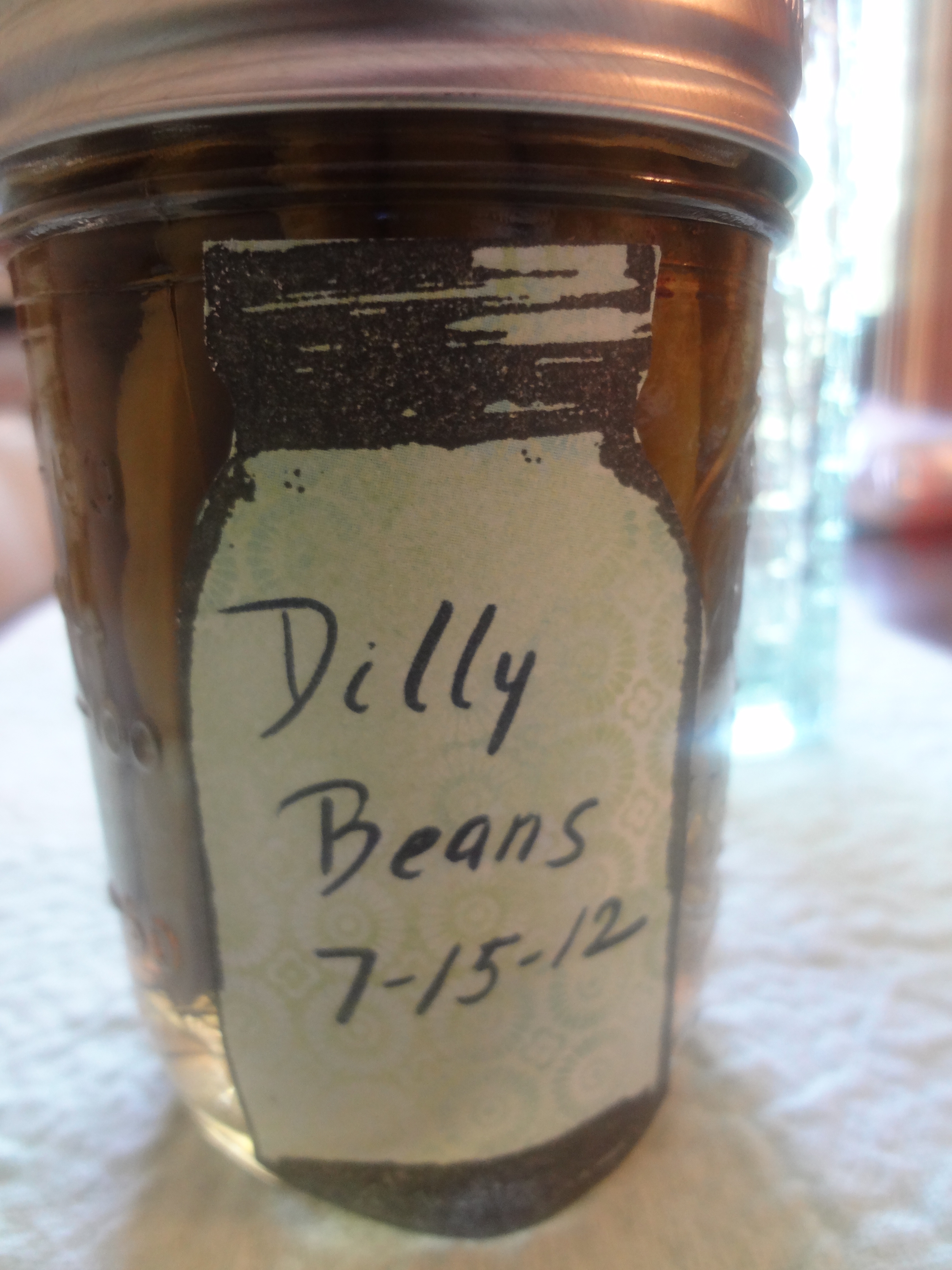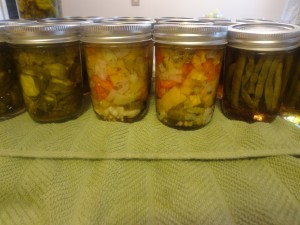
Watching the vines grow, I look at my cute little vegetable garden and think of so many things. First, I find it quite beautiful with its different shades of green leaves growing larger and more radiant daily. The colors have expanded recently to include bright hues of reds and oranges on my tomatoes and peppers.
I’ve also found a great peace in creating my own food. The euphoria of picking an ingredient straight out of the garden and creating a recipe from it has enlightened my nights in the kitchen.
The only bad part of my garden is that it DOES create a heck of a lot of food!!! (This is my first year with a green thumb and I sort of ignored the part of the plant tag that talked about yields!)
Between my CSA, trips to the Farmer’s Markets and the garden, I have realized that I have bit off more than I can chew. I have also realized that I am going to be very depressed this winter without all of my fresh produce at my fingertips!
Winter? Here was my thought, I should can some of this stuff so in the winter I can continue to relish (pun intended) in my bounty. Now I had never even contemplated canning before because it seemed like a lot of time in the kitchen to get a jar of pickles. (It also seemed like I’d only seen it done on the Walton’s or Little House on the Prairie.)
Before I jumped into the canning process (another pun that only canners will get), I knew that I had better get educated on the subject. My three ways of learning are reading, listening and viewing.
My first plan of attack was to read Chef Paul Virant’s book, Preservation Kitchen. He is a wonderful Chicago chef who I met at a food event this winter. I knew by my short time talking to him that even if I didn’t start canning, his book would be interesting and full of great recipes. (I wasn’t wrong.)
Preservation Kitchen is an awesome up to date book on how to safely can and process (do you get my pun now?) your fruits and vegetables. The best part is that his recipes are not only for canning products but how to incorporate the products into your meals. (See you don’t just have to eat your compotes on toast and your pickles on your sandwiches.)
The book is a great but I still had some more questions so I called our family home economics guru, Denise. I listened intently (and took notes) as Denise gave me the abridged Canning 101 class over the phone and answered all of my questions. (I’m hoping she doesn’t give me a quiz the next time we see each other.)
My final step in learning to can was to take a class at The Chopping Block in Chicago and watch canning magic first hand. I’ve taken over 20 classes there and have never left disappointed. As always, it was wonderfully instructed (Hi Mario) and I was able to see everything I had been reading and hearing about in the previous weeks. Plus Mario was able to answer what few questions I had left to ask.
The day after my class, I jumped in and got to canning. I had Chef Virant’s book on the counter, my notes from Denise stuck to the fridge and recipes from Chopping Block by my side.
These basic steps were covered in some shape or form from all of my sources:
- Start with clean, hot jars (no cracks or knicks) and lids (always new) must be hot too.
- Have all of your equipment ready and do your prep work before getting into the nitty gritty of processing. (My OCD is very beneficial when it comes to canning.)
- Follow the recipes! (Chef Virant does a lot of the math for you so you can figure out substitutions safely if you work within his formulas. Yep, I’m putting that math minor to use!)
- Remove air bubbles from jars after adding brines.
- Always clean the rims with a towel before you add the lids.
- The lids must be held on with a band before being put in the water bath and don’t tighten it too tight. (On my first attempt, I forgot the bands and had an epic failure!)
- Timing doesn’t start until your water is boiling.
- Any jars that are unsealed after processing should be stored in the fridge.
- After the jars are done, leave them alone for at least 12 hours. (There are a lot of steps that I am leaving out so this is just a VERY basic list.)
I canned all morning and after my one really stupid mistake, I was successful in canning bread and butter pickles, dilly beans and giardiniera (all recipes from The Chopping Block.)
The best part is that I loved every minute of it. (Okay, maybe I didn’t like when I screwed up.) I made Chef Virant’s Blackberry Jam today and hope to try some other recipes this weekend.
I am by no means a canning expert…yet. I STRONGLY suggest either taking a class or spending some time with someone who has a lot of experience in canning before you jump right into it. And hopefully before you know it you’ll be able to say, “YES, I CAN!”


Did the Waltons ever can giardiniera? Grandma should be so proud! Cuj
They never really said what they were canning. Maybe they had too much of the recipe? I do hope Grandma likes the crazy stuff I do!
I love when I benefit from the fruits of your labor! love
Hope you enjoy your canned yummies!!! I plan on going on another canning “bender” this weekend so make room in the pantry!